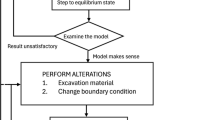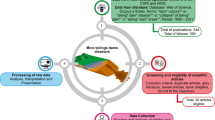Abstract
This paper summarizes the results of a comprehensive analysis that was conducted to determine the service life of chip seal treatments and evaluate different factors affecting the lifetime. The considered factors included: The existing condition of the pavement, climate, traffic volume (KESAL), and structural number of the pavement section were also investigated. To achieve this, a total of 253 sections of chip seal projects were collected from long-term pavement program (LTPP) database. Kaplan–Meier survival function model was employed to compare the survival probabilities of chip seal treatments based on the considered performance indicators. In addition, the Cox proportional hazard model was applied to capture the factors significantly influencing the service life of chip seal treatments. Finally, a hazard risk analysis was conducted on series of models in order to identify the optimum timing of chip seal application. The results of the study indicated that the survival probability of chip seal was worst for transverse crack followed by longitudinal crack, rutting, IRI, and alligator cracking. The pretreatment condition was found to be the most influential factor affecting the survival life in terms of all distresses. Climatic factors such as temperature, freeze–thaw along with structural capacity of the pavement were also found to be affecting the survival life. The hazed risk analysis based on Cox model yielded threshold value for each performance indicator, which can be used as the optimum timing for the chip seal application.



Similar content being viewed by others
References
Temple W, Shah S, Paul H, Abadie C (2002) Performance of louisiana’s chip seal and microsurfacing program. Transp Res Rec J Transp Res Board 1795:3–16. https://doi.org/10.3141/1795-01
Gransberg DD (2005) Chip seal program excellence in the United States. Transp Res rec 1933(1):72–82. https://doi.org/10.3141/1933-09
Buss AF, Guriguis M, Claypool B, Gransberg DD, Williams RC (2016) Chip seal design and specifications. report No. FHWA-OR-RD-17–03, Oregon. Department of Transportation. Research Section
Labi S, Sinha KC, Asce F (2004) Effectiveness of highway pavement seal coating treatments. J Transp Eng 130:14–23
Lee JS, Kim YR (2009) Performance-based uniformity coefficient of chip seal aggregate. Transp Res Rec 2108(1):53–60
Kiefer J, Collling T, Farrey S (2017) Effective modelling of extended service life for pavement treatments. Transp Res Rec J Transp Res Board 1–15:17–04396
Rajagopal (2010) Effectiveness of chip sealing and micro surfacing on pavement serviceablity and life. report no. FHWA/OH-2010/8. Ohio Department of transportation.
Mamlouk MS, Dosa M (2014) Verification of effectiveness of chip seal as a pavement preventive maintenance treatment using LTPP data. Int J Pavement Eng 15(10):879–888
Rahman MN, Sarkar MTA, Elseifi MA, Mayeux C, Cooper SB III, Free K (2021) Short-term field performance and cost-effectiveness of crumb-rubber modified asphalt emulsion in chip seal applications. Transp Res Rec 2675(9):1049–1062
Jalali F, Vargas-Nordcbeck A (2021) Life-extending benefit of chip sealing for pavement preservation. Transp Res Rec 2675(6):104–116
Dong Q, Huang B (2015) Failure probability of resurfaced preventive maintenance treatments: investigation into long-term pavement performance program. Transp Res Rec 2481(1):65–74
Chen DH, Lin DF, Luo HL (2003) Effectiveness of preventative maintenance treatments using fourteen SPS-3 sites in Texas. J Perform Constr Facil 17(3):136–143
Kim YR, Adams J (2011) Development of a new chip seal mix design method. report No. FHWA/HWY-2008–04, North Carolina Department of Transportation.
Liu L, Hossain M, Miller R (2010) Life of chip seal on Kansas highways. In: compendium of papers from first international conference on pavement preservation.
Maurer G, Polish P (2008) Exploring alternative strategies for the rehabilitation of low-volume roads in Nevada. Report No. NV-RDT-08–001, Nevada Department of Transportation
Kutay ME, Ozdemir U, Hibner D, Kubargeri Y, Lanotte M (2016) Development of an acceptance test for chip seal projects. report No. SPR-1649. Michigan state university
Vargas-Nordcbeck A, Jalali F (2020) Life-extending benefit of crack sealing for pavement preservation. Transp Res Rec 2674(1):272–281
Hosmer WD, Lemeshow S (1998) Applied survival analysis: regression modeling of time to event data. Wiley, New York
Yu J, Chou EY, Yau JT (2008) Estimation of the effects of influential factors on pavement service life with Cox proportional hazards method. J Infrastruct Syst 14(4):275–282
Cox DR (1972) Regression models and life-tables. J Roy Stat Soc Ser B (Methodol) 34(2):187–202
Iliuta S, Hesp SA, Marasteanu MO, Masliwec T, Tam KK (2004) Field validation study of low-temperature performance grading tests for asphalt binders. Transp Res Rec 1875(1):14–21
Pszczola M, Jaczewski M, Rys D, Jaskula P, Szydlowski C (2018) Evaluation of asphalt mixture low-temperature performance in bending beam creep test. Materials 11(1):100
Hall KD, Xiao DX, Wang KC (2011) Calibration of the mechanistic–empirical pavement design guidefor flexible pavement design in Arkansas. Transp Res Rec 2226(1):135–141
Wang Y, Mahboub KC, Hancher DE (2005) Survival analysis of fatigue cracking for flexible pavements based on long-term pavement performance data. J Transp Eng 131(8):608–616
Author information
Authors and Affiliations
Corresponding author
Ethics declarations
Conflict of Interest
On behalf of all authors, the corresponding author states that there is no conflict of interest.
Rights and permissions
Springer Nature or its licensor holds exclusive rights to this article under a publishing agreement with the author(s) or other rightsholder(s); author self-archiving of the accepted manuscript version of this article is solely governed by the terms of such publishing agreement and applicable law.
About this article
Cite this article
Talha, S.A., Nazzal, M.D., Manasreh, D. et al. Survival analysis to determine the factors affecting the optimum timing of chip seal application. Innov. Infrastruct. Solut. 7, 350 (2022). https://doi.org/10.1007/s41062-022-00949-y
Received:
Accepted:
Published:
DOI: https://doi.org/10.1007/s41062-022-00949-y




